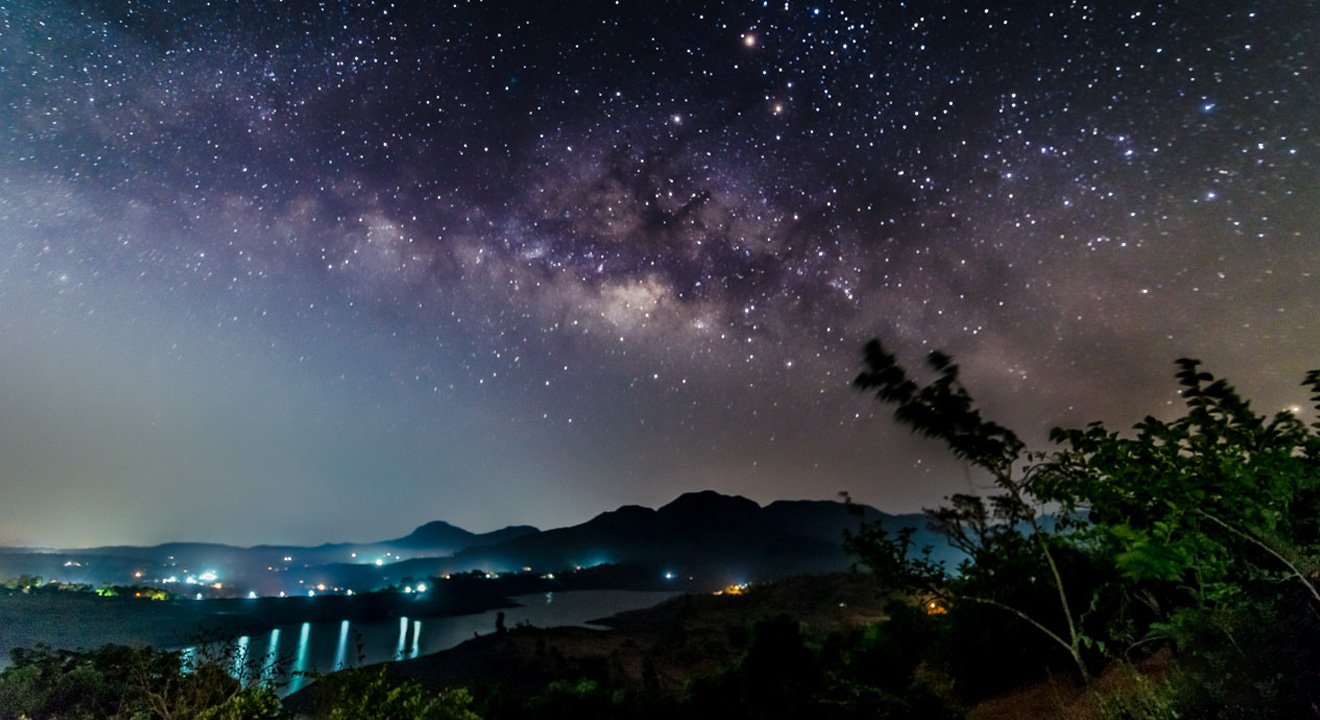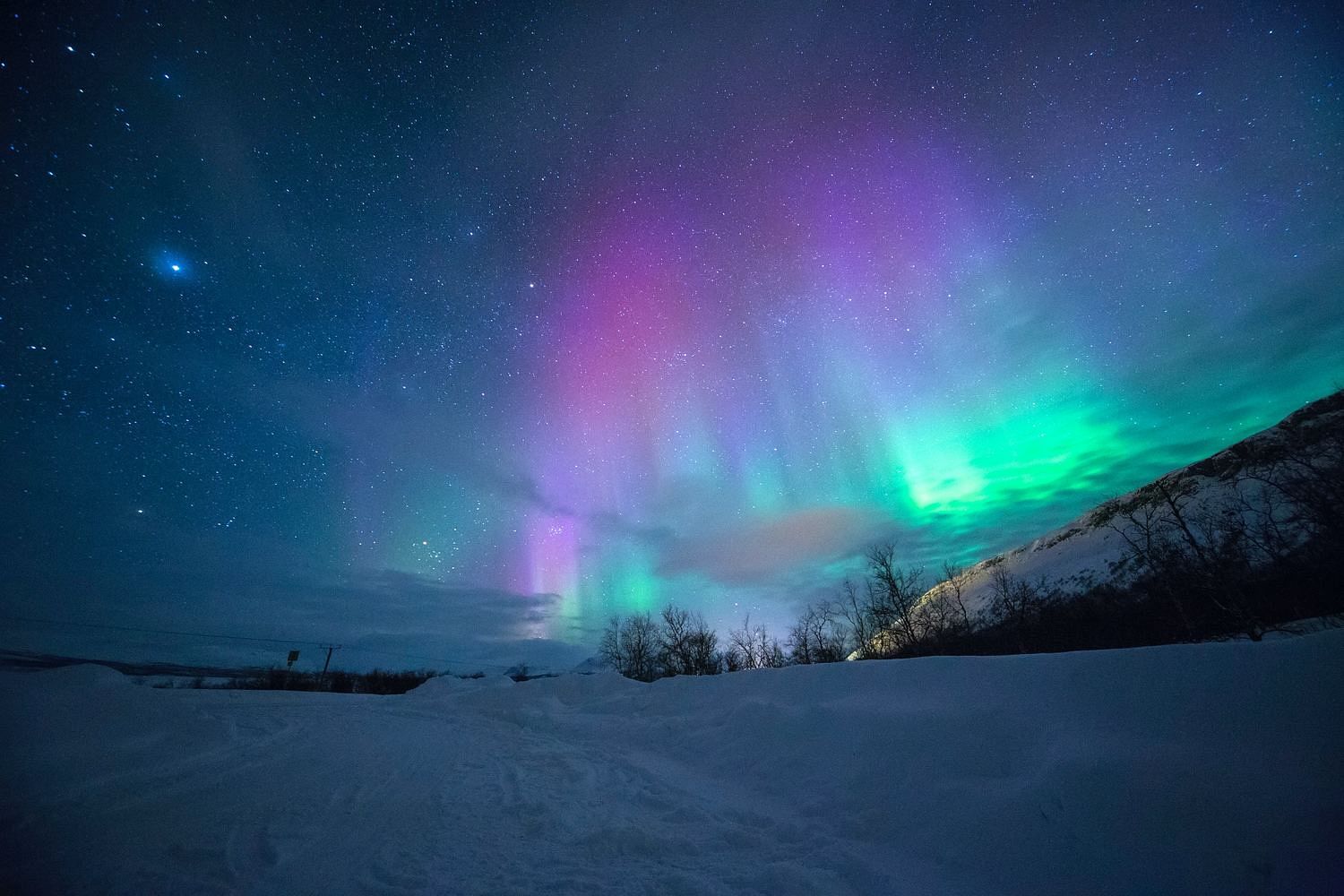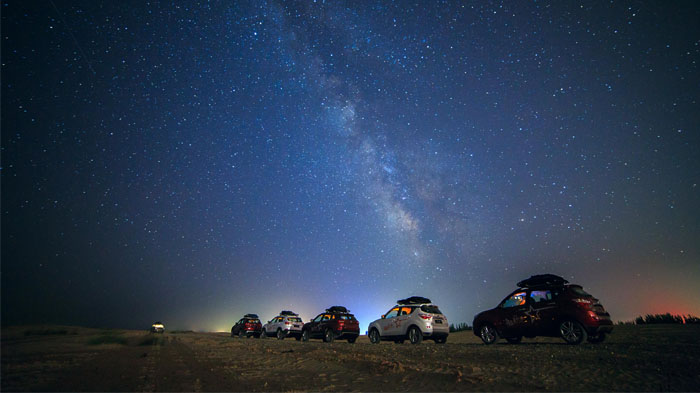The Northern Lights, also known as the Aurora Borealis, are one of nature’s most magical spectacles — a breathtaking dance of colorful lights across the night sky. While this phenomenon is usually associated with Arctic regions like Norway, Iceland, or Finland, many travelers are surprised to learn that the Northern Lights can occasionally be seen from certain parts of India too! Though rare and faint compared to high-latitude countries, India’s northernmost regions — especially Ladakh, Kashmir, and Arunachal Pradesh — offer glimpses of this natural wonder during peak geomagnetic activity.
This blog takes you through the best places to see the Northern Lights in India, along with the best time to visit, photography tips, and how to plan your aurora adventure right here at home.
What Are the Northern Lights?
The Northern Lights are caused by charged particles from the Sun colliding with Earth’s magnetic field, creating shimmering displays of green, pink, red, and violet light in the upper atmosphere. They are typically visible near the magnetic poles — but during strong solar storms, these lights extend further south, occasionally making them visible from northern India.
In India, the Northern Lights sightings are extremely rare and unpredictable, but stargazers and adventure seekers sometimes get lucky, especially in regions with high altitudes, clear skies, and minimal light pollution.
1. Ladakh, Jammu & Kashmir – India’s Own Aurora Frontier
When it comes to celestial wonders, Ladakh tops the list. Its high altitude, dry atmosphere, and pollution-free skies make it a stargazer’s paradise. In recent years, geomagnetic activity has occasionally lit up the skies above Hanle, Pangong Tso, and Nubra Valley — areas already popular for their ethereal beauty.
Best Time to Visit:
Between October and March, when the skies are crystal clear and temperatures drop, increasing visibility.
Travel Tip:
Visit the Hanle Dark Sky Reserve, India’s first dark sky sanctuary, located near the Indian Astronomical Observatory. Even if the aurora doesn’t appear, you’ll witness an unmatched view of the Milky Way and constellations.
Recommended Package:
Explore Sikkim & Ladakh Tour Packages or 8 Days Sikkim Trip Packages for breathtaking Himalayan skies.

2. Nubra Valley – Stargazer’s Paradise in the Himalayas
Located at an altitude of over 10,000 feet, Nubra Valley offers one of the clearest night skies in India. During periods of high solar activity, there have been faint sightings of auroral lights along the horizon.
Apart from the Northern Lights, travelers can also enjoy night camping, Milky Way photography, and the surreal beauty of Hunder Sand Dunes and Diskit Monastery.
Best Time to Visit:
Late September to February, when the skies are at their clearest.
Travel Tip:
Carry a DSLR with manual exposure settings to capture even faint auroral activity.
Internal Link Suggestion:
For adventure seekers, explore 4 Nights 5 Days Sikkim Family Tour Package for similar Himalayan charm and starlit experiences.
3. Pangong Tso Lake – Reflections of the Cosmos
Pangong Lake is famous for its crystal-blue waters and breathtaking mountain backdrop, but it also serves as one of India’s most photogenic stargazing locations. During geomagnetic storms, this region’s elevation and proximity to the magnetic latitude make it a possible vantage point for aurora activity.
What to Expect:
While the chances of witnessing vivid green curtains like in Iceland are low, subtle flickers or glows have occasionally been observed — especially by astrophotographers during winter months.
Best Time to Visit:
October to February, when the skies are clearest and nights are longest.
Travel Tip:
Avoid visiting during the monsoon and always carry extra batteries, as cold temperatures can drain camera power quickly.
Recommended Adventure:
Pair your trip with 5 Nights 6 Days Sikkim Gangtok Darjeeling Tour Package for a complete Himalayan adventure.
4. Tawang, Arunachal Pradesh – Aurora in the East
While Tawang is known for its monasteries and scenic valleys, it also offers one of India’s most pristine night skies. Located close to the geomagnetic latitude line, Tawang and its neighboring regions have been reported to experience faint auroral activity during major solar storms.
Even without the aurora, Tawang’s clear skies, Buddhist culture, and dramatic landscapes make it an ideal getaway for nature lovers and astrophotographers.
Best Time to Visit:
November to March, when visibility is highest.
Must-Do:
Attend early morning prayers at Tawang Monastery, followed by an evening under a canopy of stars.
5. Kargil & Drass – Frozen Landscapes, Fiery Skies
Drass, one of the coldest inhabited places on Earth, offers surreal night skies during winter. The region’s remoteness, high altitude, and minimal light pollution create perfect conditions for celestial photography — and on extremely rare occasions, faint auroras have been reported.
Best Time to Visit:
December to February, though the region is harshly cold — suitable only for seasoned travelers.
Pro Tip:
Combine your Kargil trip with a visit to Leh and Nubra for a chance to capture both snow-covered peaks and starry horizons.
Tips for Photographing the Northern Lights in India
-
Use a DSLR or Mirrorless Camera with manual settings.
-
Set ISO between 800–3200 for low light conditions.
-
Use a tripod — stability is key for long exposure shots.
-
Find a dark location far from city lights.
-
Check space weather forecasts using apps like Aurora Alert or SpaceWeatherLive.
Even if you don’t catch the aurora, you’ll return with stunning images of the Milky Way, shooting stars, and night landscapes.
When Are the Northern Lights Visible in India?
Auroras are linked to solar storm activity, which peaks roughly every 11 years in a cycle known as the Solar Maximum. The next Solar Maximum is predicted around 2025–2026, making it a promising time for enthusiasts in northern India to keep their cameras ready.
Other Amazing Stargazing Destinations in India
If you’re passionate about astronomy and stargazing, also explore:
-
Spiti Valley, Himachal Pradesh – Known for clear skies and high-altitude views.
-
Rann of Kutch, Gujarat – Perfect for Milky Way and meteor shower viewing.
-
Coorg, Karnataka – Ideal for astrophotography amid lush greenery.
-
Sandakphu, West Bengal – Offers panoramic Himalayan views under starry skies.
FAQs About Northern Lights in India
Q1. Can we really see Northern Lights in India?
Yes, though very rare. During strong geomagnetic storms, faint auroras may be visible from high-altitude regions like Ladakh or Arunachal Pradesh.
Q2. Which is the best place to see the Northern Lights in India?
Hanle in Ladakh is the top location due to its elevation, low humidity, and India’s first dark sky reserve.
Q3. When is the best time to see Northern Lights in India?
Between October and March, when skies are clearest, especially around geomagnetic storm peaks.
Q4. What should I carry for a Northern Lights trip in India?
Warm clothing, a good-quality camera, tripod, power bank, and a space weather app for aurora alerts.
Conclusion: Witness the Skies Dance Above India
While India isn’t traditionally known as an aurora destination, the Himalayan belt offers a front-row seat to the universe — with the rare possibility of witnessing the Northern Lights. Beyond the thrill of chasing auroras, this journey rewards you with breathtaking mountain landscapes, starlit skies, and peaceful isolation that few places on Earth can match.
So, if the idea of sleeping under a thousand stars excites you, pack your camera, your warmest jacket, and your sense of wonder — because the northern skies of India may surprise you yet.





